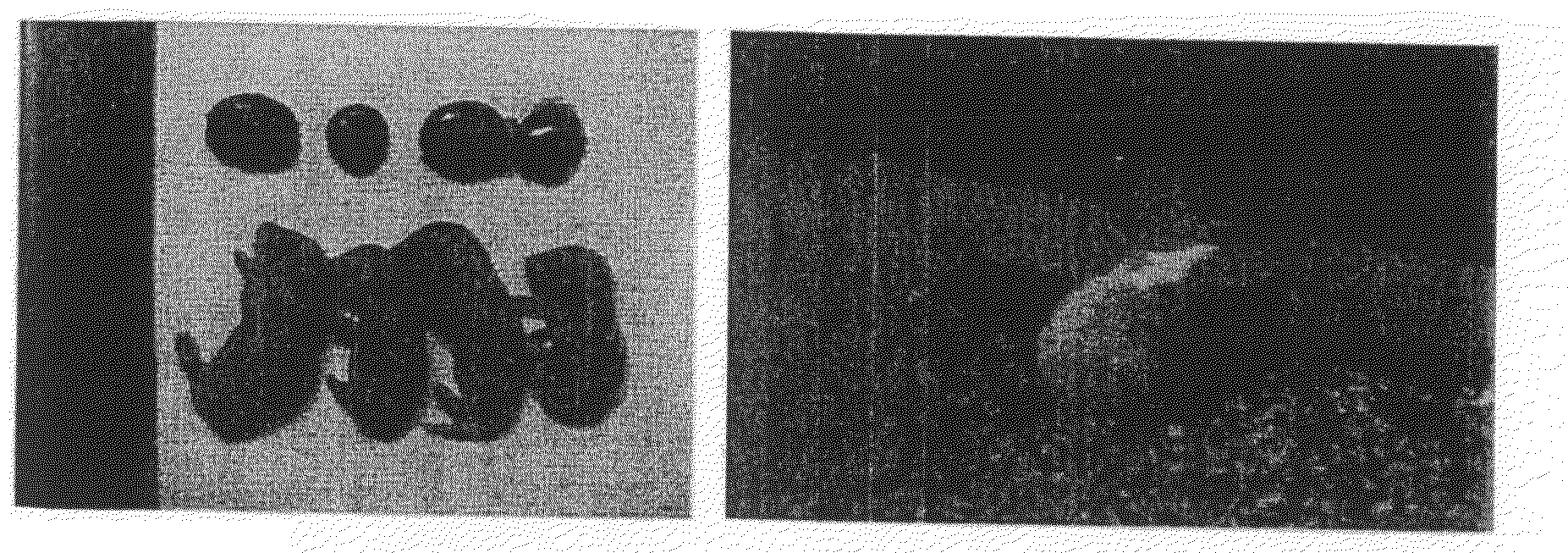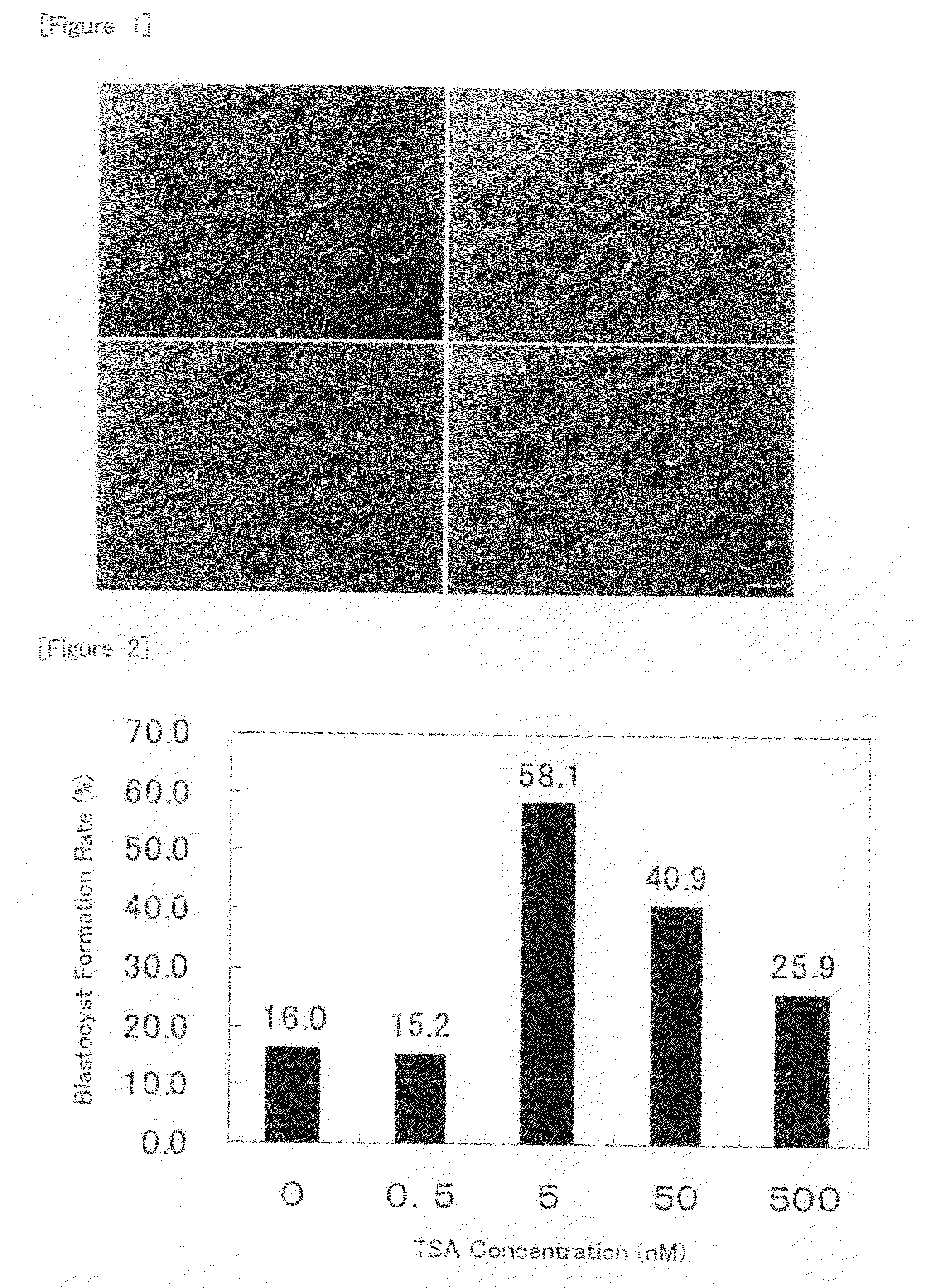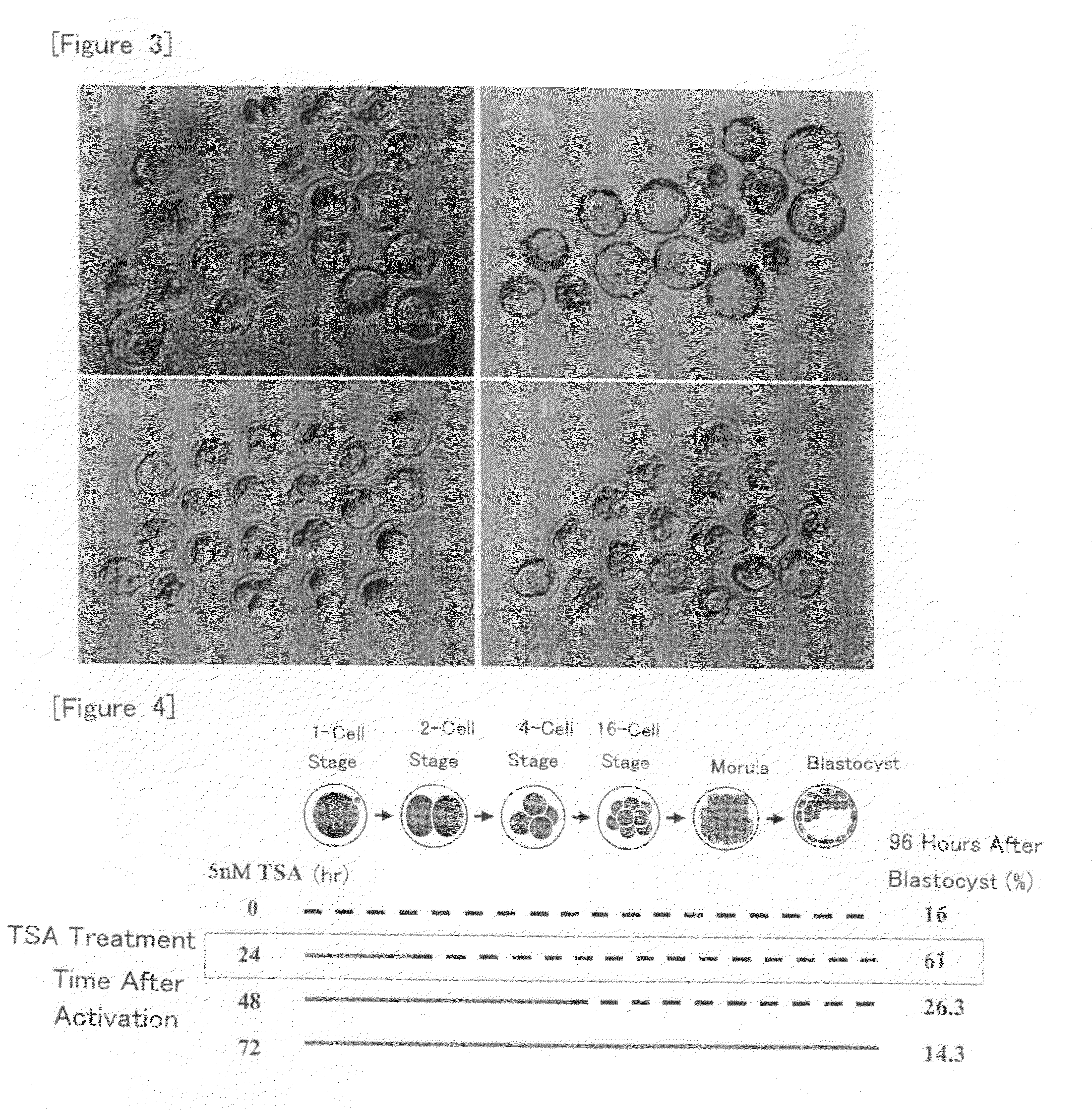Method for Producing Nuclear-Transplanted Egg
- Summary
- Abstract
- Description
- Claims
- Application Information
AI Technical Summary
Benefits of technology
Problems solved by technology
Method used
Image
Examples
example 1
[0084]Production of cloned mice including production of nuclear transfer embryos was carried out according to the method as described in Non-patent Document 5. Briefly, pregnant mare serum gonadotrophin (PMSG) was first administered to 8-weeks-old female B6D2F1 (C57BL / 6 XDBA / 2) mice (Japan SLC) for superovulation treatment. Human choriogonadotropin (hCG) was administered after 48 hours. Oocytes were collected after 16 hours. Nuclei were removed from the collected unfertilized oocytes in the presence of 5 μg / ml of cytochalasin B using a micromanipulator (enucleation).
[0085]Next, cell membranes of cumulus cells from a B6D2F1 mouse as donor somatic cells suspended in a 1.2% polyvinylpyrrolidone (PVP) solution were destroyed using an injection pipette, and the nuclei were injected into the enucleated oocytes using a micromanipulator (nuclear transfer). A piezo drive apparatus (Prime Tech) was used to generate piezo-pulses for penetration of zona pellucida or cell membranes which is requ...
example 2
[0090]Nuclear transfer oocytes were produced by injecting nuclei from cumulus cells into enucleated oocytes according to the method as described in Example 1, cultured in KSOM medium containing TSA at a concentration of 5 nM for various periods of time (for 0, 24, 48 or 72 hour(s) from the initiation of activation), and then cultured in KSOM medium without TSA until 96 hours after the initiation of activation. Then, development into expanded blastocysts was observed and the blastocyst formation rate was determined.
[0091]The results are shown in FIGS. 3 and 4. As shown in FIG. 4, the blastocyst development rate was increased as compared with the case without the treatment with TSA when the treatment with TSA was carried out for 24 or 48 hours from the initiation of activation. In particular, about 4-fold increase was observed for the treatment for 24 hours. On the other hand, the development rate was rather reduced when the treatment was carried out for 72 hours from the initiation o...
example 3
[0092]Nuclear transfer oocytes were produced by injecting nuclei from cumulus cells into enucleated oocytes according to the method as described in Example 1, cultured in KSOM medium containing TSA at a concentration of 5 nM for various periods of time (for 0 hour, for 6 hours from the initiation of activation, for 10 hours from the initiation of activation, from 10 to 24 hours after the initiation of activation, or for 24 hours after the initiation of activation), and then cultured in KSOM medium without TSA until 96 hours after the initiation of activation. Then, development into expanded blastocysts was observed and the blastocyst formation rate was determined.
[0093]The results are shown in FIG. 5. As shown in FIG. 5, the highest blastocyst development rate as compared with the case without the treatment with TSA was observed when the treatment with TSA was carried out for 10 hours after the initiation of activation.
PUM
| Property | Measurement | Unit |
|---|---|---|
| Molar density | aaaaa | aaaaa |
| Molar density | aaaaa | aaaaa |
| Molar density | aaaaa | aaaaa |
Abstract
Description
Claims
Application Information
 Login to View More
Login to View More - R&D
- Intellectual Property
- Life Sciences
- Materials
- Tech Scout
- Unparalleled Data Quality
- Higher Quality Content
- 60% Fewer Hallucinations
Browse by: Latest US Patents, China's latest patents, Technical Efficacy Thesaurus, Application Domain, Technology Topic, Popular Technical Reports.
© 2025 PatSnap. All rights reserved.Legal|Privacy policy|Modern Slavery Act Transparency Statement|Sitemap|About US| Contact US: help@patsnap.com



